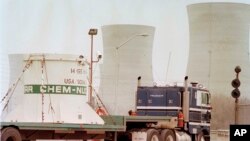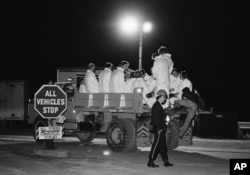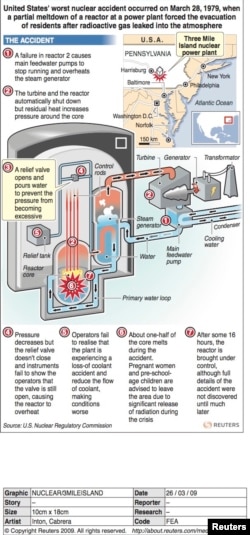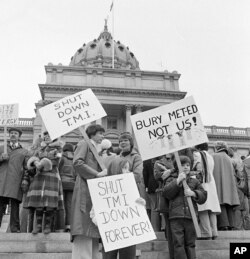Thirty-eight years ago today — March 28, 1979 — disaster struck at 4 a.m. at the Three Mile Island (TMI) nuclear power plant in central Pennsylvania after its cooling system failed.
It remains the worst nuclear accident in American history.
A simple plumbing failure prevented the main feedwater pumps from sending water to generators that remove heat from the plant's core reactor.
During those pre-dawn hours, the temperature of the reactor rose steadily even as staffers were unaware that a valve in the emergency cooling system had become stuck in place, allowing cool water to flow through the valve — not reaching the reactor.
Instruments in the control room misled operators, who thought the cooling system was working normally.
As coolant flowed from the primary system through the valve, other instruments available to reactor operators provided inadequate information. There was no instrument that showed how much water covered the core. As a result, plant staff assumed that as long as the pressurizer water level was high, the core was properly covered with water.
As alarms rang and warning lights flashed, the operators did not realize that the plant was experiencing a loss-of-coolant accident — or, rather, the beginnings of a nuclear meltdown. And just after 6:00 am, data indicated the core reactor had overheated so much that radiation was detected inside the control room.
Half the core was later found to have melted.
By the evening of March 28, the core appeared to be adequately cooled and the reactor appeared to be stable.
But new concerns arose by the morning of March 30.
A significant release of radiation from the plant's auxiliary building, performed by operators to relieve pressure on the primary system and avoid curtailing the flow of coolant to the core, sparked public concerns and consternation among politicians.
In an atmosphere of growing uncertainty and concern, then-Governor Dick Thornburgh, consulted with the Nuclear Regulatory Commission (NRC) about evacuating the population near the plant.
Eventually, he and NRC Chairman Joseph Hendrie agreed that it would be prudent for those members of society most vulnerable to radiation to evacuate the area.
Thornburgh announced that he was advising pregnant women and pre-school-age children within a five-mile (8 km) radius of the plant to leave the area.
The national and international media had given the accident at Three Mile Island front page attention for days. Then-President Jimmy Carter decided a frightened nation needed his presence. On April 1, Carter went to inspect the damaged plant.
In the months following the accident, questions were raised about possible adverse effects from radiation on human, animal and plant life around the nuclear power plant, although none could be directly correlated to the accident.
Thousands of environmental samples of air, water, milk, vegetation, soil and foodstuffs were collected by various government agencies monitoring the area.
In 1997, researchers from Environmental Health Perspectives, the journal of the U.S. National Institute of Environmental Health Science concluded increases in lung cancer and leukemia near the Pennsylvania plant suggested a much greater release of radiation during the 1979 accident than had been believed.
The accident sparked sweeping safety regulations. The damaged reactor, on the Susquehanna River near Harrisburg, was never restarted. No new commercial nuclear power plant was licensed by the federal government until 2012.
But an article written by Michael Grunwald published in Time magazine in 2009 summed up Three Mile Island this way:
"The TMI fiasco was a scary cultural moment…But there was nothing particularly tragic about it. It didn't kill people. It didn't kill nuclear power.”











